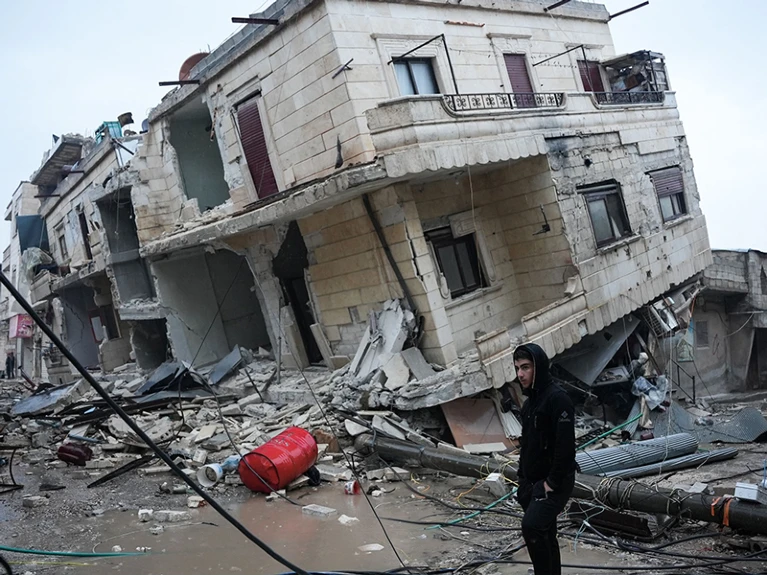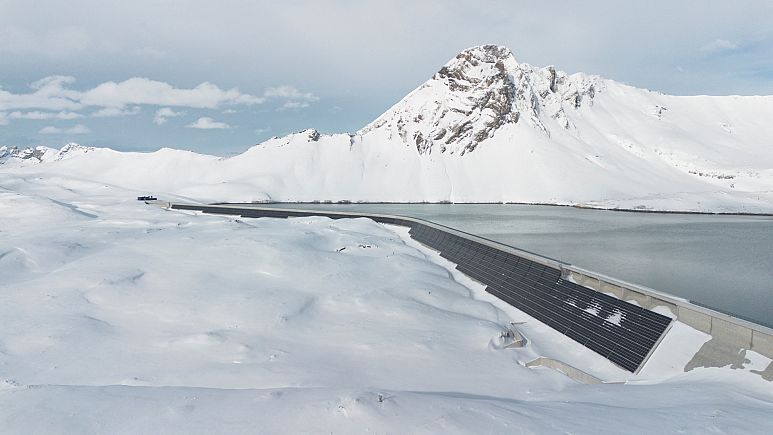Eye drop manufacturer issues recall amid CDC investigation of infections, death
眼藥水製造商在 CDC 調查感染、死亡事件中召回產品
Health
Global Pharma Healthcare is issuing a recall of its Artificial Tears Lubricant Eye Drops that were distributed by EzriCare and Delsam Pharma due to possible contamination, the US Food and Drug Administration said Thursday. The drops were sold online across the US in multidose bottles. Consumers should stop using them and report any adverse reactions to the FDA. The US Centers for Disease Control and Prevention is investigating 55 reports of infections, one fatal, in 12 states that may be linked with the products. The CDC says it received reports of infections of the cornea, intraocular fluids, respiratory tract and urinary tract, as well as sepsis. Some of the cases involved permanent vision loss or hospitalization, and one person died.
--from CNN Health
美國食品藥物管理局(US Food and Drug Administration, FDA)於週四宣佈,Global Pharma Healthcare召回由 EzriCare 和 Delsam Pharma 分銷的人工淚液,因為該產品可能遭受污染。這些滴劑以多劑量瓶的形式線上銷售至美國各地。消費者應停止使用它們且向 FDA 報告任何不良反應。美國疾病控制與預防中心(US Centers for Disease Control and Prevention, CDC)正在調查12個州可能與這些產品有關的55份感染報告,其中1份是致命的。CDC表示,收到了角膜、眼內液、呼吸道和泌尿道感染及敗血症的報告。當中一些病例涉及永久性視力喪失或住院治療,及一人死亡。
--摘錄翻譯自CNN Health
Canadian province decriminalizes hard drugs
加拿大省將硬性毒品合法化
Health
Drug policy remains a hotly debated topic among experts and politicians. While many countries rely on prohibition and punitive measures, others have begun taking a more liberal approach. For example, Canada legalized the sale and consumption of cannabis in 2018, with the aim of decreasing demand on the black market and decreasing drug-related crime. Now, the country's northwestern province of British Columbia has launched an ambitious pilot project that will run for at least three years: Since January 31, 2023, people found in possession of up to 2.5 grams of hard drugs will no longer be committing an offense. Adults carrying a combined total of fewer than 2.5 grams of cocaine (in powder or "crack" form), methamphetamine, MDMA, heroin, morphine, fentanyl will not be arrested or prosecuted. Nor will the substances be confiscated.
--from DW Health
毒品政策仍是業界專家與政界人士熱議的話題。雖然許多國家依靠禁令和懲罰措施進行管控,但部分國家已開始採取更自由的方式。例如,加拿大於 2018 年將大麻的銷售和消費合法化,目的是減少對大麻黑市的需求並減少毒品相關的犯罪。現在,該國西北部不列顛哥倫比亞省啟動了一項雄心勃勃的試點項目,該項目至少會運行三年:自2023年1月31日起,被發現擁有不超過2.5公克硬性毒品將不再是犯罪。攜帶總量少於2.5公克的古柯鹼(粉末或「快克」形式)、甲基苯丙胺、搖頭丸、海洛因、嗎啡、吩坦尼的成年人不會被逮捕或起訴。這些藥品也不會被沒收。
--摘錄翻譯自DW Health
Earthquakes batter Turkey, Syria’s historical monuments
土耳其與敘利亞的名勝古蹟遭強震毀損
Culture
A series of devastating earthquakes and aftershocks in Turkey and Syria, which have left more than 5,000 people dead, have also destroyed or damaged several of the ancient region’s historical monuments that had survived wars and natural disasters for centuries. Experts fear the earthquakes could compound the loss of the region’s cultural legacy. Turkey’s government has said more than 5,600 buildings have been destroyed in just that country. Here are some of the key monuments known to have suffered damage from the earthquakes: (1) Gaziantep Castle, Gaziantep, (2) Sirvani Mosque, Gaziantep, (3) Aleppo Citadel, Aleppo, (4) Diyarbakir Fortress, Sur, (5) Yeni Mosque, Malatya.
--from Al Jazeera (article with video)
土耳其與敘利亞(2月7日)發生了一系列毀滅性的強震和餘震,已造成 5,000 多人死亡,還毀損了該地區的許多名勝古蹟。其中很多名勝古蹟都是在過去已歷經幾百年戰爭與自然災害的洗禮並且倖存下來。專家對於此次強震對該地區文化遺產的流失頗感擔憂。土耳其政府表示,僅該國就有 5,600 多座建築物已遭毀損。以下是一些已知在地震中受損的重要古蹟:(1) Gaziantep的 Gaziantep 城堡,(2) Gaziantep的 Sirvani 清真寺,(3) Aleppo的Aleppo城堡,(4) Sur的Diyarbakir堡壘,(5) Yeni清真寺,Malatya。
--摘錄翻譯自Al Jazeera(原文含影片)
Culture as a Centuries-Long Game of Telephone
人類文化就如同進行了幾百年的傳話遊戲
Culture
The literary scholar and Harvard professor Martin Puchner’s latest book, “Culture: The Story of Us, From Cave Art to K-Pop,” makes the case that this enmeshment [of culture] has been the rule rather than the exception. In Puchner’s telling, human history is not one of neatly delineated canons and hierarchies that respect geographical boundaries. “In our debates over originality and integrity, appropriation and mixture, we sometimes forget that culture is not a possession.” … In this account, culture resembles a centuries-long game of telephone, as ideas resound through time and spread across continents. As people migrate, they make and remake culture to help explain the contexts in which they find themselves.
--from The New York Times
文學學者和哈佛大學教授Martin Puchner 在最新著作《文化:我們的故事,從壁畫到韓國流行音樂》當中論證,人類文化的融合本就是常態而非例外。在 Puchner 的論述中,人類歷史並不是根據地緣邊界整齊劃分出來的,且歷史更不像文學作品般各個社會有各自的主線劇情與制度。「在關於原創性和完整性、挪用和融合的辯論當中,我們時常忘記文化並非財產。」 ……在此論述中,人類文化就像一場長達幾個世紀的傳話遊戲,因為思想會隨著時間的推移而傳播到各大洲。 隨著人們的遷移,他們會創造和重塑文化以幫助他們理解所處的環境。
--摘錄翻譯自The New York Times
Turkey–Syria earthquake: what scientists know
土耳其與敘利亞地震:科學家所知為何
Sciences
A magnitude-7.8 earthquake hit southeastern Turkey and parts of Syria in the early hours of the morning of 6 February. At least 5,000 people are known to have lost their lives, with thousands more injured. The quake was followed by a magnitude-7.5 event some 9 hours later, as well as more than 200 aftershocks. Nature spoke to four researchers about the seismic activity in the region and what the next few days will bring. The tectonic plate that carries Arabia, including Syria, is moving northwards and colliding with the southern rim of Eurasia, which is squeezing Turkey out towards the west, says David Rothery, a geoscientist at the Open University in UK. “Turkey is moving west about 2 centimetres per year along the East Anatolian Fault,” he adds. “Half the length of this fault is lit up now with earthquakes.”
--from Nature news
土耳其東南部和敘利亞部分地區在2月6日凌晨發生芮氏7.8級地震。已知至少有5,000人喪生,數千人受傷。大約9小時後,7.5級地震緊接著發生,並有200多次餘震。《自然》雜誌洽詢四位研究人員有關該地區的地震活動以及未來幾天的情況。英國Open University的地球科學家David Rothery說:「承載包括敘利亞在內的阿拉伯半島的構造板塊正在向北移動,並與歐亞大陸的南緣相撞,將土耳其向西擠壓。土耳其每年沿著東安納托利亞斷層向西移動約2公分」,他補充道:「這條斷層一半的長度現在都被地震凸顯出來。」
--摘錄翻譯自Nature news
Switzerland's solar dam: Why are mountains and snow the perfect mix for solar energy?
從瑞士的太陽能大壩一探為何高山與白雪是產出太陽能的完美組合
Sciences
A snaking wall of solar panels has been attached to Switzerland's longest dam. The solar dam is helping the landlocked nation maximise its green energy production in the winter months. The Lake Muttsee dam, in the central Swiss canton of Glarus, is over 2,400 metres above sea level and is surrounded by snow-capped peaks - something that the team behind the AlpinSolar project says is a key benefit. "One of the qualities of alpine solar plants is that, especially in winter, they produce up to three times more electricity than a comparable facility in the midlands," says Jeanette Schranz, communications lead for renewables at Swiss energy producer Axpo. Schranz says Switzerland's mountains are less affected by fog in colder months, meaning the panels see more sun than they would at lower altitudes. "The reflection from the snow also helps," Schranz says, adding that "solar panels like the cold and have a higher yield in cooler temperatures."
--from Euronews (article with video)
瑞士最長的大壩上安裝了蜿蜒的太陽能面板牆。太陽能大壩正幫這個內陸國家在冬季最大限度地提高綠色能源產量。位於瑞士中部Glarus的Lake Muttsee大壩海拔超過2,400米,周圍環繞著白雪皚皚的山峰—支持AlpinSolar計畫的團隊表示這是一個關鍵優勢。瑞士能源生產商Axpo的可再生能源通訊主管Jeanette Schranz說:「高山太陽能發電廠的一個特點是—它們的發電量可高達中部地區同類設施的三倍,尤其是在冬季。」Schranz說瑞士的山脈在較冷的月份受霧的影響較小,這意味著面板能比在低海拔地區受到更多的陽光。Schranz補充說「雪的反射也有幫助,太陽能面板喜歡寒冷,而在較冷的溫度下產能更高。」
--摘錄翻譯自Euronews(原文含影片)
